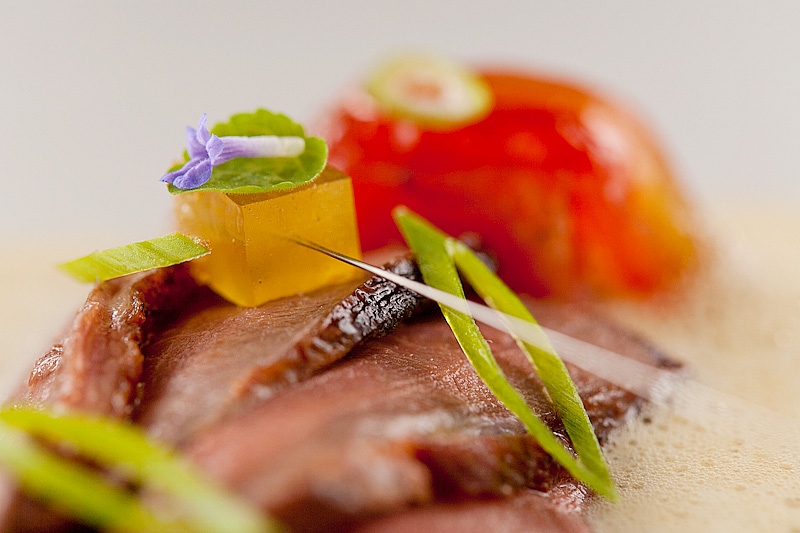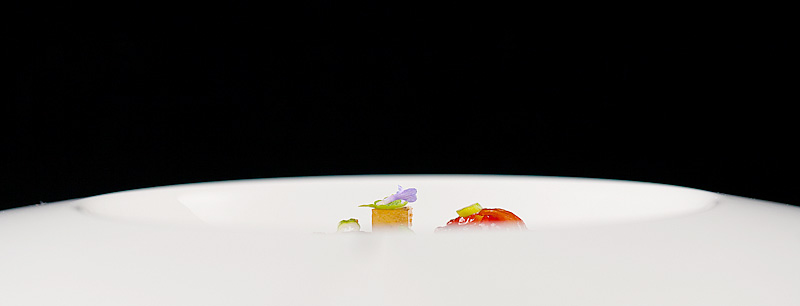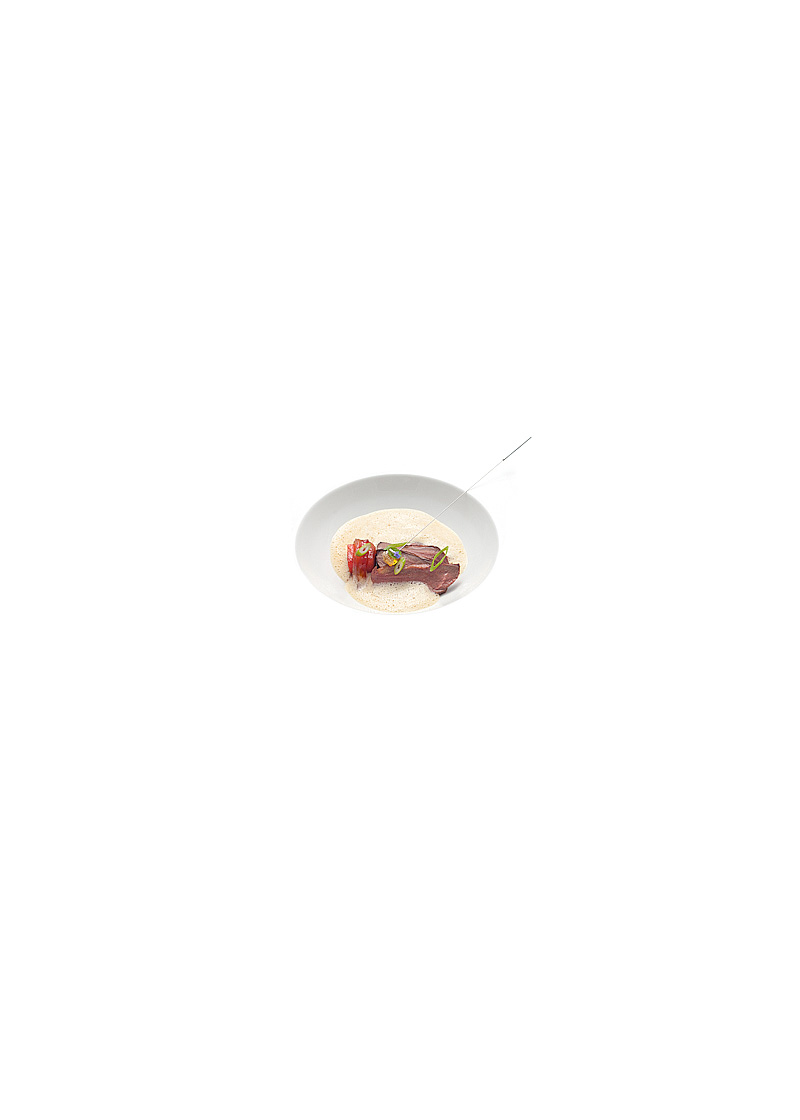
Work’s gotten a little overwhelmingly busy for me lately, and it’s sidelined the time I have to spend in the kitchen. I get itchy each time this happens, but this time around has been especially frustrating. We’re doing a bunch of new software testing, which inevitably leads to a lot of things not working. Christopher articulated it well the other day when he remarked “This is a little like trying to push about 10 boulders up a hill at once.” There’s so much interdependency that it’s hard for any one person to have very much control, and the push of deadlines means it’s hard to do things at the quality level I’d like to do them.
This leaves me wanting time for this project even more sharply, because at least here everything is mine. Ironically, when I found the time to work on this, it was a little like pushing a bunch of rocks up a hill at once. No other dish has physically taxed the limits of what I’m able to do in the space I have with the tools I have as much as this one has. There’s just a LOT to do.
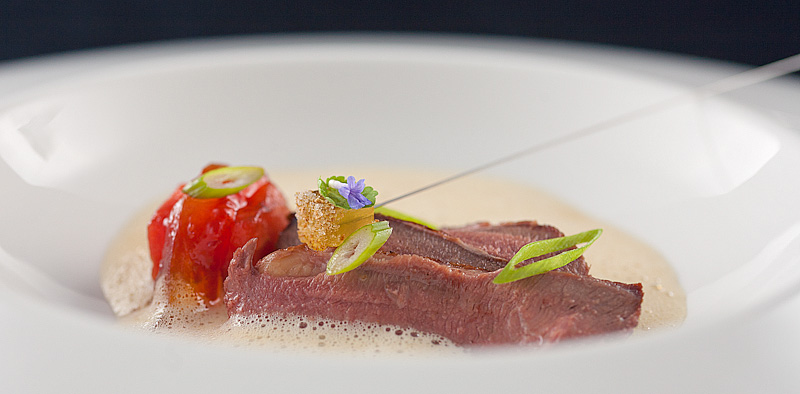
In this dish, I started with a small dot of licorice syrup about the size of a dime. On top of this is a ragout made from squab leg meat, caramelized onions, burnt onion stock, and small foie gras cubes. Thinly-sliced crispy-skinned squab breast rests on the ragout, as does a cube of licorice-marinaded watermelon and a strip of candied watermelon pith. A froth of foie gras emulsion is spooned around this mound. The assembly is topped with a small cube of fennel candy coated in anise sugar. Not pictured (because I forgot to plate it) is a thin stick of dehydrated onion that’s been charred on one end.
Top to bottom, the dish took about 3 full days of raw kitchen time.
The innocuous drop of licorice syrup starts with dry licorice extract, some star anise pods, molasses, sherry vinegar, black peppercorns, sugar and a few tablespoons of veal stock. If you’re starting the recipe from scratch, you might be tempted to skip the full recipe to make your own veal stock (1kg of it)–which involves buying some split calf’s feet and veal bones and simmering these with various vegetables in three 8-hour waves–in favor of buying some frozen veal stock at a market like Berkeley Bowl or Whole Foods. I didn’t, but I also admittedly didn’t make this veal stock from scratch this time. I had some leftover from the Root Beer dish, for which I’d doubled the veal stock recipe to carry me through a few dishes.

The squabs themselves were new to me, and I’ve fallen madly in love with them having worked with them here. “Squab” is actually a culinary term referring to domestic pigeons (or the meat from them). Squabs are similar to duck or the dark meat of chicken; the breast meat is red like a duck’s, and overall the bird has a fattier texture than chicken, but not quite as much as duck.
For this dish, I worked with 4 whole squabs I bought frozen from Berkeley Bowl; I let these thaw very slowly for about 5 days in my fridge. Sarah offered her commentary on this thusly:
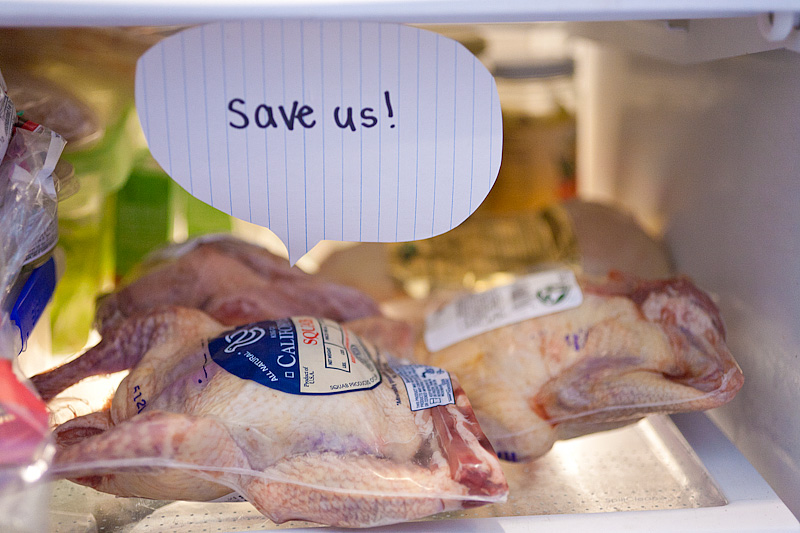
The squab is prepared in two ways here. I first removed the legs from each squab and placed them in a ‘licorice cure’ of anise, fennel, sugar, and salt. These cured for several hours before being removed and rinsed, then placed in a vacuum bag with canola oil (I also threw in a few anise pods, because I like licorice so much). These are cooked en sous vide for 5 hours–or, at least, they’re supposed to be. I don’t have a sous vide setup big enough to hold this bag, so I had to use a stockpot on a burner and periodically check it. This is super-ghetto and a huge pain in the ass, but I managed to keep it fairly steady and within +-2 degrees or so for the whole of the 5 hours, largely because I was standing at the stove doing a lot of other stuff at the same time.
(Now might be a reasonable time to point out this thing I threw in for when it was recently on Kickstarter, because this hasn’t been my first frustrating experience trying to manage a long-cooking temperature while also trying to do several other things at the same time.)
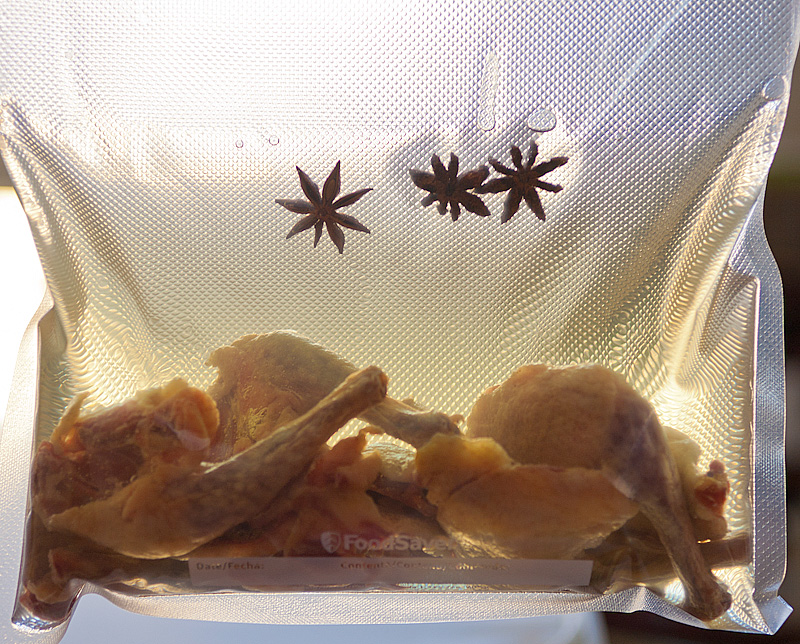
While the legs were cooking, I also worked on a big batch of caramelized onions. I actually did this three times, because I found it a bit of a curious process. I know that if you cook onions long enough, they turn a lovely brown on their own (without adding sugar to fake-trigger the caramelizing process), but the Alinea book uses a curiously-large amount of oil in which they cook the onions (100g or so for 1 onion). I’d always just used a splash or two of oil to lubricate the pan, but I noticed that a lot of the onions tend to char quickly, and my final batch would have some hard crispy bits (not that I mind this; I really love this in fact. But something about it felt a little sloppy to me, so I wanted to experiment). I found that the large amount of oil tends to buffer things a bit, so the onions brown uniformly and are all soft…no crispy bits. I still needed to manage temperature watchfully, and stir frequently as they browned, but by the third time (or: 2 hours of cooking onions later) I’d gotten a nice batch for use in the ragout.
Also while the legs were cooking, I removed the breasts from the squabs and held these to be prepared just before plating. The remaining carcasses were made into a stock with some fennel, onion, and vermouth, which also had to cook for 5 hours or so to fully render the marrow and fat from the squab bones.
At the same time, I also made burnt onion stock. This involved charring some sliced onions on a very hot iron skillet until completely black, then simmering for about an hour with water to extract the flavor. For those counting, this is now 4 burners going at once for a big chunk of one day.
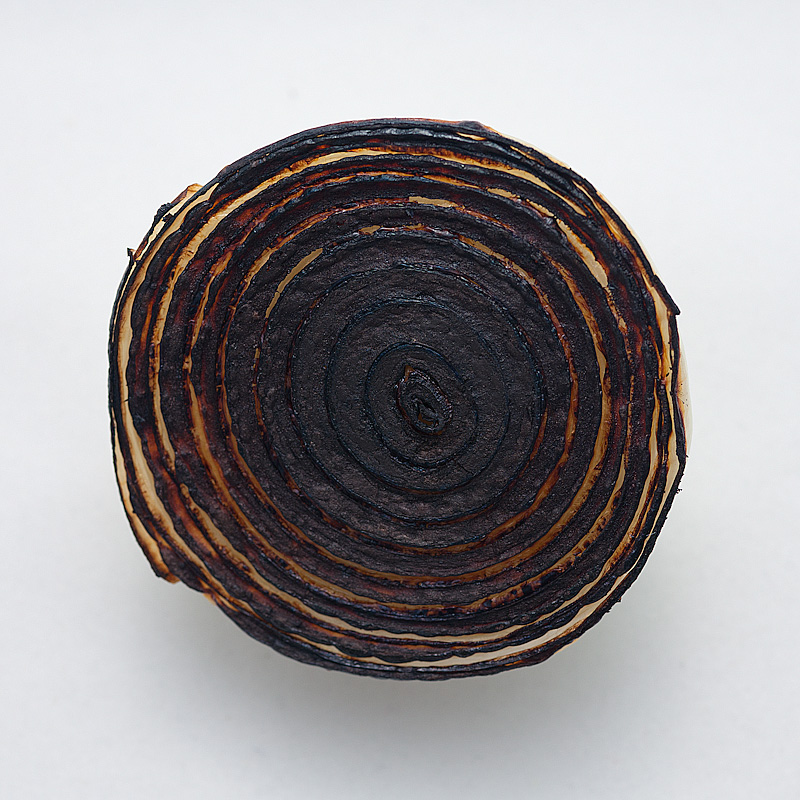
When the legs were very tender and fully cooked, I removed them from the water bath and picked the meat from the bones while it was still warm. I also tasted some of it–the first time I’d actually tasted the squab. It was stupefyingly delicious. It had that lovely fatty melty unctuous quality without feeling greasy, and I was surprised at how flavorful the meat was. I combined it with the squab stock, some burnt onion stock, onions, some charred scallions, and butter and cooked gently until it thickened.
Also in the ragout were some small cubes of foie gras, which is now illegal to sell in California. I managed to buy a lobe of Grade A foie from Hudson Valley a day before they were required to cease shipping to California. The foie was cured for 24 hours with pink curing salt, kosher salt, and sugar, then diced into cubes. I used the prettiest cubes for the ragout here, and the rest went into a foie emulsion I made later.
I next worked on the watermelon components. I started by making a licorice marinade from licorice powder, sugar, anise, water, and a bit of citric acid. Into this I put some cubes of watermelon. The book specifically calls for a “Red seedless watermelon”, which I wasn’t immediately familiar with. Berkeley Bowl tends to have lots of varieties of produce, so I bought a few seedless watermelons, including one that was handily-labeled “red seedless watermelon”. The red seedless was dark green and didn’t look as ‘watermelony’ as another small seedless one I found…
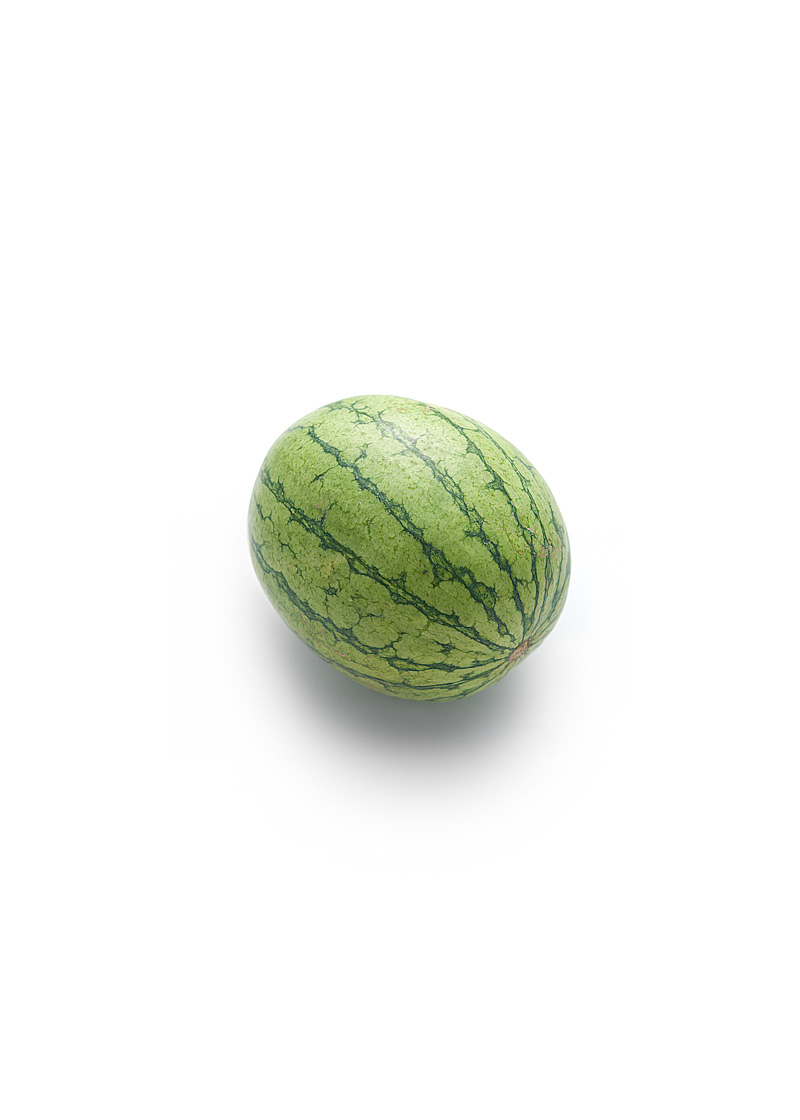
…until I cut them both open. The red seedless has a much thicker rind, which was important for one of the components I’d be doing next. Flavor-wise, I couldn’t tell a huge difference between the two. I cut the red bit of both into cubes and put them in the marinade for 20 minutes or so to infuse them with licorice flavor. This was surprisingly subtle but delicious; the licorice was just a hint rather than a big powerful note, but man I could eat these things all day.
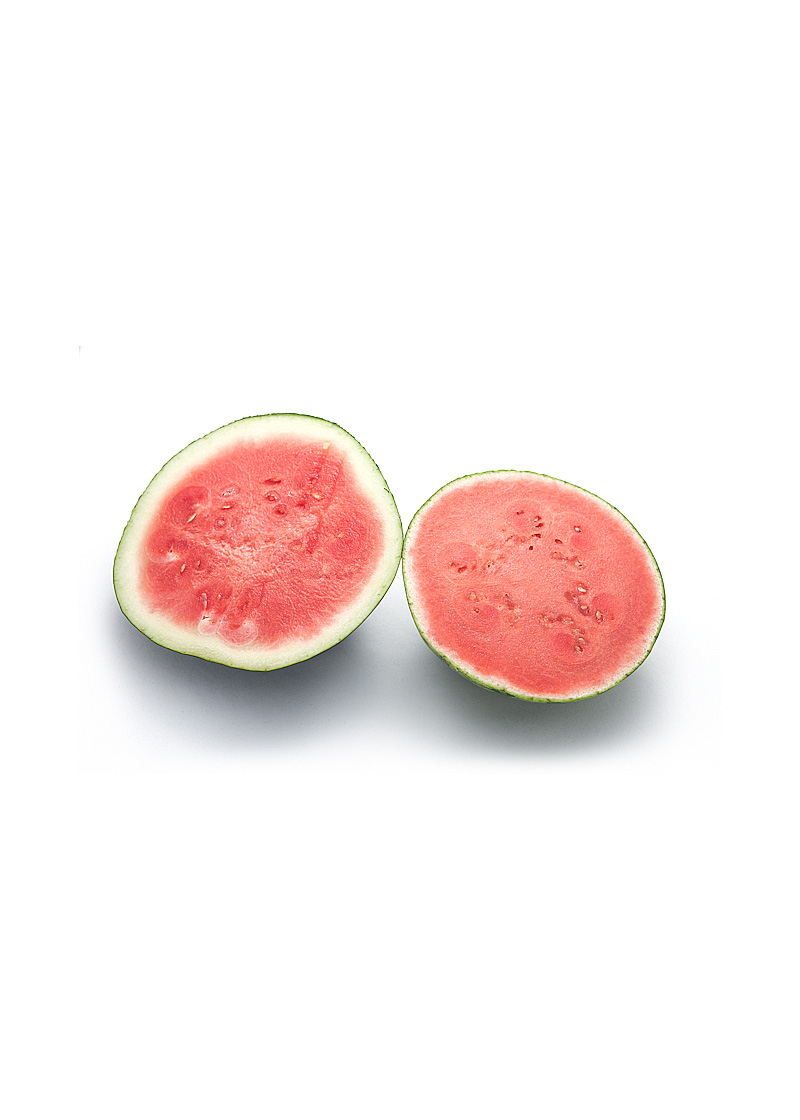

I cut the rind from the red seedless into chunks about 2″ x 4″, and cooked these for about three hours in a thick mixture of sugar, water, and citric acid to candy them. During this time, they shrunk down and deepened sharply in color, and took on a sort of odd jellied consistency. After they cooked, I chilled them to firm them up, then cut them into long, thin strips. They’re super-delicious and taste a little like watermelon but a little like something else (something indefinable).

While the pith was candying, I also cut an onion into thin strips and poached them in sugar and water for a minute, then dehydrated them completely. A silly side story: around the time I was doing this I was also cooking dinner for Sarah and I (poached NZ bluenose in a broth of mushroom and basil, with mushrooms). We both like exploring new mushrooms, and Sarah had snagged a batch of some porcinis, lobster mushrooms, hen-of-the-woods, and some small shiitakes. I *think* I’ve had bad experiences in the past with shiitakes (in that I’ve had a few very bad reactions to dishes, and thought the common thread was shiitake), but I didn’t know for sure, and because I’m working on this project I’m trying to be proactive about trying everything. So I thought “Ok, maybe me and shiitakes can be friends, I’ll try ’em again”. It turns out shiitakes are delicious! It also turns out that I was totally right! They make me sick as hell…I get really, really bad stomach cramps and feel terrible. This kicks in maybe an hour after I eat them. So I spent the rest of this night directing Sarah how to finish up these onions and the watermelon pith (“Ok, the onions…uuuuggghhh…need another hour in the dehydrator…can you poke at them and see how crispy they’re getting in a half hour?”).
Anyway, science! Sorry shiitakes, we can’t be buds.
The next morning, pretty groggy and still cramping, I torched the ends of the onion sticks so they looked like burnt matches, and then started work on some fennel candy.

For the candy, I juiced a couple pounds of fennel, then cooked this with sugar, pectin, and citric acid. Raw fennel juice is a lovely bright green and has a fresh flavor; when I started cooking it I could smell it changing right away though. It lost a lot of its subtle notes, and I was a little bummed that the candy wouldn’t taste like what the raw juice tastes like. But, to make the candy I cooked the juice and sugar to 225F, which is over water’s boiling point. This meant that a lot of the compounds in the fennel were left behind to caramelize, and the mixture took on a deeper and more-complex flavor. I thought this transformation was really cool…really I was making caramelized fennel candy.

While the candy was setting, I crushed some star anise pods with some sugar, salt and fennel pollen in a spice grinder until it was a fine powder. The candy was cut into small cubes and one side was dipped in the anise sugar to season it and heighten its flavor. I love stuff like this; they’re little powerhouses of flavor smaller than a fingernail. The book suggests garnishing them with fresh fennel flowers, but my fennel isn’t yet flowering so I used some fresh anise hyssop leaves and a lavender flower.
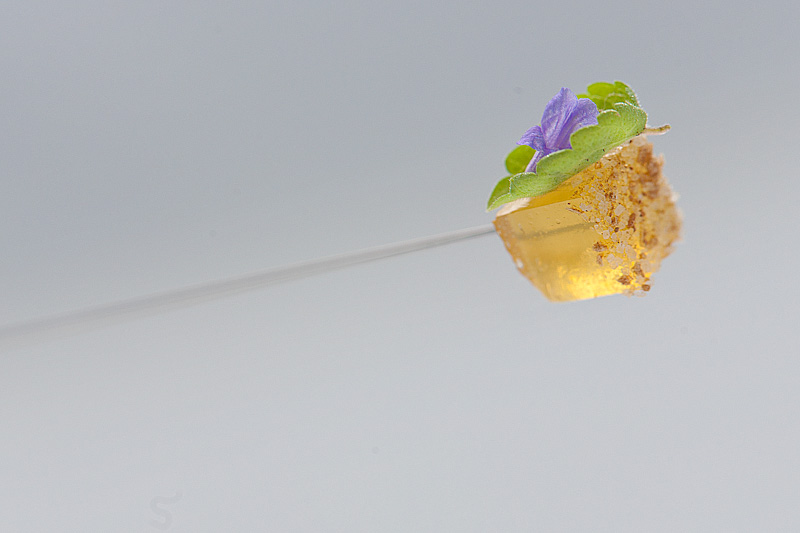
The last thing I worked on was a foie gras emulsion. I started by mixing equal parts foie and butter, and this mixture was cooked with heavy cream, squab stock, burnt onion stock, sherry vinegar, and soy lecithin. The lecithin helps keep things emulsified and also allows the mixture to be frothed into bubbles.
I’d gotten it in my head that the inclusion of foie gras would make this dish really foie-gras-y…but it wasn’t at all. I was fascinated by this; the foie was used as an accent only, and while it definitely offered an unmistakable note of complexity, that note was never loud and obnoxious and clamoring for center stage. Mostly it added an extra layer of unctuousness and silkiness to the already-silky and delicious squab itself. I guess in thinking about it, this sorta makes sense considering how similar the squab meat is to duck meat.
To plate the final dish, I seasoned the squab breast with salt and pepper, then seared it for a few moments to crisp the skin while leaving the center rare. I sliced it thinly and fanned it out over the ragout, accented it with the watermelons, and topped it with the fennel candy and some scallion slices. For my first platings for Sarah and myself, I remembered to include the crispy charred onion stick, but totally forgot to include it for the photos here. Meh.
I have to say this is one of my absolute favorite dishes from this book so far. It’s complex and delicious and rich without being overwhelmingly heavy the way beef dishes can be. The sweetness of the watermelon and the brightness of the licorice flavors interwoven through everything keep it balanced and almost-refreshing. It’s quite amazing to me. Sarah didn’t really dig on it at all; these flavors aren’t up her alley, so she stopped about halfway through her serving. I was more than happy to help clean it up though.
